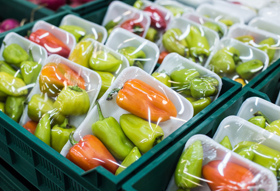
Industry Innovation: Dissolvable foam

There are a huge range of considerations to bear in mind when developing packaging and other protective materials. Of course, the main culprit that springs to front of mind is plastic – both single use and recyclable. It has caused havoc and, as a result, has encouraged considerable innovation within the plastics and packaging industry.
Although foam is considered to be a more environmentally friendly material, the industry is still spearheading new ways to re-use, re-cycle and repurpose foam. Most commonly, foam is often broken down into small parts known as ‘crumb’ and then re-compacted together to create a new foam grade known as reconstituted foam. Reconstituted foam is widely available and is very popular amongst those looking for a cheaper foam alternative. However, despite the price, it still maintains the same levels of quality and durability as its newly made counterparts.
A new innovation launched in the US involves foam packaging that is dissolvable in water. A new development that has been researched and launched by US-based food supplier Perdue Farms, the company has developed a type of foam insulation packaging that keeps products cold and protected in a suitable atmosphere. With its underlying component being corn-starch, the packaging can be either composted or even disintegrated under water before being rinsed down the drain.

The corn-starch-based foam material is further shielded from moisture by a recyclable plastic wrapper. Although the packaging is not entirely plastic-free, the company has made an excellent step towards addressing the problem of foam packaging. However, an industry-wide hurdle still stands with regards to how best to protect food and other perishable goods from spoiling without the use of plastic-based packaging.
In addition, there are other innovations underway within the foam industry that are trying to even further reduce the impact of foam. At present, there are two main ways in which foam is recycled: mechanical recycling and chemical recycling. Mechanical recycling involves re-using foam in its polymer form – such as breaking it down and reconstituting it into "crumb" – whereas chemical recycling consists of several stages that help break down the foam back into its chemical constituents. In terms of new innovations, textile scientists and chemical engineers are currently working closely to better reduce the recycling process, making chemical recycling even more environmentally friendly, as well as re-thinking new ways to re-use foam.
Being environmentally friendly is at the top of many company agendas, particularly as consumers are becoming more conscious of their carbon footprint. As such, we are expected to see an increase in foam and similar textile innovation in the near future, particularly as national governments are keen to impose significant sanctions to companies that do not adhere to guidelines.

eFoam is a proud leader in the industry’s efforts to become more environmentally conscious and sustainable. We offer our customers the option to buy reconstituted foam products that are available cut to size, shape and thickness, just as they would look to purchase a brand new product. Furthermore, we are pleased that no foam is sent to landfill during the production process - all our foam offcuts are reconstituted.
Should you wish to read more on eFoam’s environmental efforts, take a read of this blog. Alternatively, if you wish to discuss an environmentally-friendly foam option tailored to you, please contact us.

